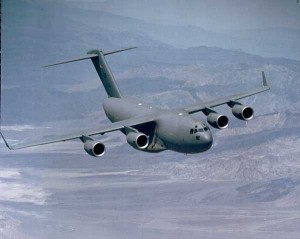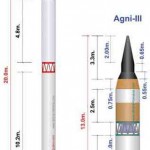Landing at Hulule airport on the island of Male in the wee hours of the morning, the Indian forces secured the airfield quickly for reinforcements to be flown in during the day by both IL76 and AN32 aircraft. Rapid intervention by the Indian expeditionary force successfully thwarted the assault by the mercenary force and helped restore the rule of the legally constituted government of the Maldives. The effective military intervention albeit on a relatively small scale and the swift response by the airborne forces was once again attributable to the military airlift capability of the IAF.
India – A Regional Power
As per credible estimates, with an annual growth rate sustained at 8 to 9 per cent, India is expected to be an $8.2 trillion economy by 2050. Backed by a resurgent economy, India is already acknowledged as a regional economic power and is expected to emerge as a global economic powerhouse within the next two decades or so. While the rising economic status will expand the envelope of India’s security interests to extend from the Middle East to South East Asia with special need to focus on areas in the world related to energy security, it will also confer upon her new roles and responsibilities.
| Editor’s Pick |
India will be expected to play a leading role in maintaining peace, stability and economic growth in the region. However, should India be elevated to the status of a permanent member of the UN Security Council which ought to be a natural corollary to her rising status, at the global level, India will also be called upon to respond swiftly with humanitarian assistance in the event of natural disasters, deploy peace keeping forces around the world, carry out emergency evacuation of her citizens from areas torn by civil strife as in the case of Egypt and Libya in the recent past and could also be required to intervene militarily in conflict situations or to participate in joint operations to secure peace anywhere in the world.
“¦swift response to emergency situations or other global commitments arising in distant lands is feasible only by means of a fleet of strategic military airlift aircraft”¦
Such responsibilities require the nation to possess the capability of power projection through rapid transportation and deployment of sizeable forces as also provide support to combat elements operating both not only within but also well beyond national boundaries. India’s capability in playing its role meaningfully as a regional power and hopefully, in due course as a global power, will hinge to a large extent on the strategic and tactical airlift capability of the IAF. From the Indian experience thus far since independence as also of the other leading powers, it is abundantly clear that swift response to emergency situations or other global commitments arising in distant lands is feasible only by means of a fleet of strategic military airlift aircraft with the necessary attributes of respectable reach and heavy lift capability.
Airlift Capability of the IAF Today
The 43-tonne payload capacity Russian IL76 acquired by the IAF in the mid 1980s was the first modern aircraft on its inventory with true strategic airlift capability. Having rendered yeomen service over the last two and a half decades, of the total of 17 aircraft inducted, less than half the number remains on the frontline at any given point in time.
It appears that the ageing fleet continues to be afflicted with poor product support by the Original Equipment Manufacturer (OEM) as the Indian Ministry of Defence (MoD) has been exploring alternative sources for spares through global tenders, a practice never followed in the past. In any case, the IL76 fleet today is in no shape or size to measure up to the substantially enhanced national responsibilities.
Also in the mid eighties, the IAF began to induct the Ukraine-built six-tonne payload capacity 1,500-km range AN32 Medium Tactical Transport Aircraft with the fleet size going up to around 110 by the mid-nineties. Of the total number inducted, the 103 that remain in service have already been overtaken by obsolescence and are badly in need of at least midlife upgrade, if not total replacement. To this end, consequent to a tender floated by the MoD in December 2007, a $400-million contract was signed in July 2009 between the IAF and Spectechnoexport for modernisation of the fleet. Since then, the first batch of five aircraft upgraded at Ukraine’s Antonov Plant has been received by the IAF and ten more are expected by the end of the year. A total of 40 aircraft are to be upgraded in Ukraine and the remaining 63 at the IAF’s Number 1 Base Repair Depot located at Kanpur.
However, the AN32 fleet which is being upgraded with essentially better avionics and cockpit instrumentation will benefit only by way of a temporary lease of life. Without only a marginal increase in payload capability and performance parameters of the aircraft, there would be only a minor enhancement of the overall tactical airlift capability of the IAF. Besides, the ageing fleet is rapidly approaching the end of its Total Technical Life and is expected to be operationally viable for at most a decade. It goes without saying that the AN32 fleet of the IAF also needs to be replaced at least by the end of this decade if not earlier.
Although the C130 has been in service for over half a century, the aircraft has evolved continuously. Equipped with the latest technologies, it is today the most widely used military transport aircraft in the world.
With the ageing and dwindling fleet of IL76 and AN32 aircraft, at this point in time, the nation is clearly not in a position to effectively project power in the region. Mere will power of the IAF may not compensate for the inherent deficiency in airlift capability.
Restoration of Airlift Capability
The fact that the overall operational capability of the IAF has been declining progressively over the last decade is not a closely guarded secret. Any doubts in this regard should have been removed when in a media briefing during the anniversary of the IAF last year, Air Chief Marshal P.V. Naik, Chief of the Air Staff, was rather explicit in his statement that, “half the equipment in the IAF was obsolete.” However, he went on to assure the media that the government indeed was seized of the problem and that necessary steps were in hand to redeem the situation.
While efforts to restore the combat potential of the IAF were initiated in 2001 and the process continues to move at an agonisingly tardy pace, steps to arrest the erosion in strategic and tactical airlift capability were taken only towards the end of 2008 with the order for six C130J Super Hercules customised for special operations. These have now begun to arrive and the last aircraft is expected to be with the IAF by the end of the year. Also, there are indications that another six machines may be ordered to make up a full squadron. Although the C130 has been in service for over half a century, the aircraft has evolved continuously.





